Black currants are rich in flavor and have many health benefits. Black currants are high in antioxidants. As a simple fruit, there are many ways to get all the black currant benefits without earning a chef hat. If you are not already growing black currants, learn how to grow black currants and get these antioxidants and their benefits in your kitchen now.
Black currant (Ribes nigrum) fruits are small, dark black berries, that are slightly tart and sharp tasting, with a distinctive flavor. Some people enjoy eating them fresh. They are popular in England but not as common in North America. Black currants are most frequently used in infusions, jams, jellies, pies, tarts, and baking, and are also dried for use in tea. I’ve encountered herbal tea blends that include dried blueberries, dried elderberries, and dried black currants, so you can also add black currants to your homemade and herbal teas for their benefits, and flavor.
For decades, growing black currant bushes in your garden was banned in much of the United States because the bushes are intermediate carriers of the juniper rust fungus, which was a threat to the timber industry, including white pine trees. But modern trees are bred to resist the fungus, so it is no longer a concern. The black currant is related to red currant and gooseberry, both which grow wild in Western North America.
The shrub is hardy to zone 2 and can produce 10 pounds of dark purple, edible berries per mature bush.

Get all the Black Currant Benefits
Black currants are rich in nutrients, like the b vitamins: pantothenic acid and thiamine, vitamin c and vitamin e, as well as minerals such as calcium, potassium, manganese, magnesium and phosphorus. They are one of the riches sources of antioxidants and anthocyanins, as well as polyphenols. They also contain gamma-linolenic acid (gla).
Anthocyanins are antioxidants that are responsible for the rich purple color of black currants. Antioxidants remove oxygen reactive species and limit free radicals preventing damage. Black currants contain 15 different anthocyanins. Other foods rich in these compounds include blueberries and elderberries. Studies show that anthocyanins are beneficial for heart health, improving total triglycerides and total cholesterol levels, lowering bad cholesterol, and improving hypertension. They improve blood flow and reduce blood clotting, reducing the risk of stroke. They also reduce the cytokine damage in type 2 diabetes. Mouse studies were completed in Japan showing that black currants have a significant effect on the prevention of cardiovascular fibrosis, inflammation, and consequent diabetes-induced cardiovascular complications, directly or indirectly, by improving blood glucose levels.
Anthocyanins are also important for eye health and reduce the risk of macular degeneration and glaucoma. You’ve probably heard that blueberries are important for eye health. Blackcurrants are often used in supplements along with blueberries and bilberries to support eye health. A two year, randomized study in Japan found that black currants anthocyanins helped reduce vision loss and improved blood flow to the eyes in patients with glaucoma.
Black currants are anti-inflammatory, reducing joint stiffness and joint pain.
Black currants contain three times the vitamin c. for a healthy immune system. They support healthy immune function in much the same way as elderberry syrup, lessing the duration of colds and influenza. The antioxidants in black currants fight viruses and add antimicrobial properties to anything made with them.
Ways to use black currants to get all the benefits
1. One of the interesting options includes making an infused tincture, using the berries, and makingfruit-based cordials and liqueurs.
2. Wine making can seem like a huge undertaking, but the hands-on time is quite short. The time consuming part of wine making is in waiting for the wine to ferment. Most wine making takes two ferments, plus aging time once the wine is bottled. Black currants won’t make a super sweet wine, but black currant wine has a rich flavor and is a good source of the anthocyanin antioxidants. You can find a recipe for black currant wine, and remember that wine making is a good use of other fruits as well.
3. Jelly is another fun and interesting way to add black currant benefits to your daily life. Who doesn’t like using jelly on toast, or in baking, throughout the winter months? If you are short on time to preserve your summer harvests, black currant jelly is a great way to go. It requires only the black currant juice, sugar, heat and a bit of water. Black currants contain their own pectin so there is no need to add commercial pectin to your recipe. It really is a super simple method of preserving the goodness and benefits of black currants to enjoy all year around.
4. If jam and jelly isn’t quite your thing, you could try an interesting spiced red-cabbage dish, with added black currants for a fruity and sweet touch. This dish is bright, and a good choice to enjoy some of your black currants with. The spices are warming, making this dish a great choice for cooler days.
5. Jam might be the most thought-of preserve when it comes to berries and summer fruit. Black currant jam is no exception, and with the added texture of the fruit, it makes a tasty slightly-tart preserve for the winter months. Black currant jam is a great way to work all the black currant benefits into your normal diet, and it’s a fun way to get toddlers and pickier-eaters to enjoy it too.

Photo credit to Practical Self Reliance, used with permission.
6. Looping back to the alcohol side of enjoying black currants, you can also make a light, black current infused gin. In this method, the black currants need to stay whole as the high pectin content can cause the alcohol to jell. Infusing gin is even simpler than making a normal infusion, as the focus is on a light flavor, that only needs a day or two infusing to achieve. For fuller flavor, a longer infusion of up to three weeks is recommended.
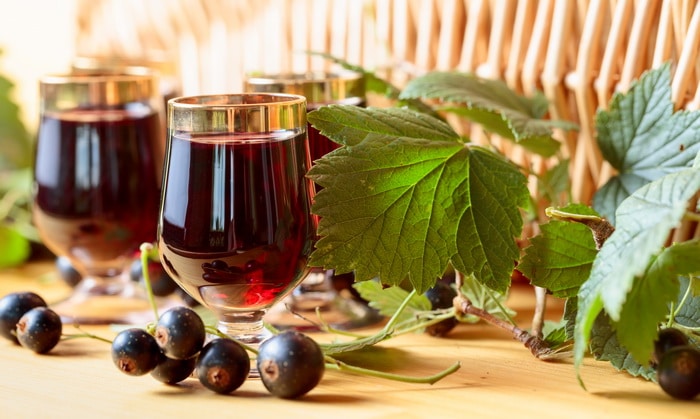
7.Infused liqueur is one of the easiest ways to get all the black currant benefits. Try a black currant liqueur, also known as Cassis, which is very similar to the other infusions. One exception is that it specifically uses vodka, if you have a wheat allergy make sure you are using a potato-based vodka. Cassis also uses cinnamon to add depth and flavor to the liqueur.
8. One of my personal favorite alcohols is mead. You can use black currants in mead to make a less-sweet and more tangy mead. Mead is a favorite base for many fruits, and many fruit or flower based wines can also be done as mead.
9. You may have made lemon curd, but black currants also make a tangy black currant curd. Try black currant curd on toast for breakfast, and enjoy all the black currant benefits without having to do a lot of cooking or baking. It is also a lovely tart filling.
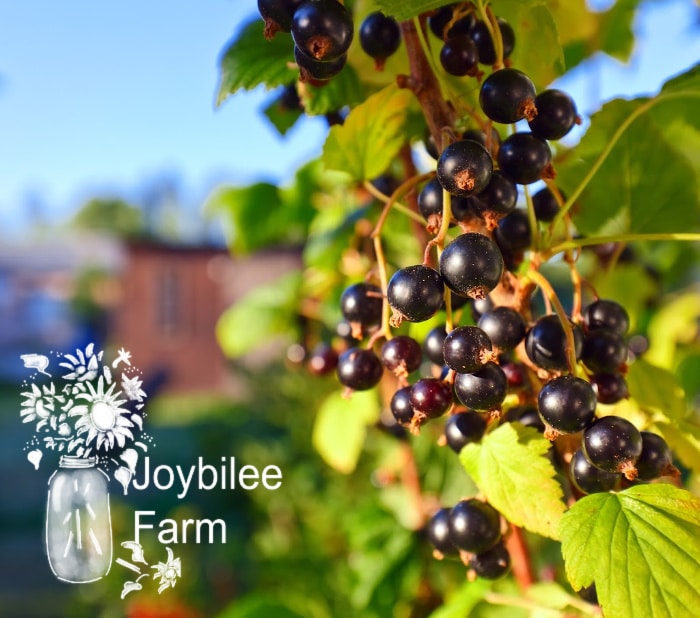
10. If drinking and spreads are not really your thing, you can bake with black currants. There are many recipes available for baking with black current spreads, jams, and the fresh fruit. Black currant shortbread, made from fresh black currants is a delicious addition to your cookie plate.
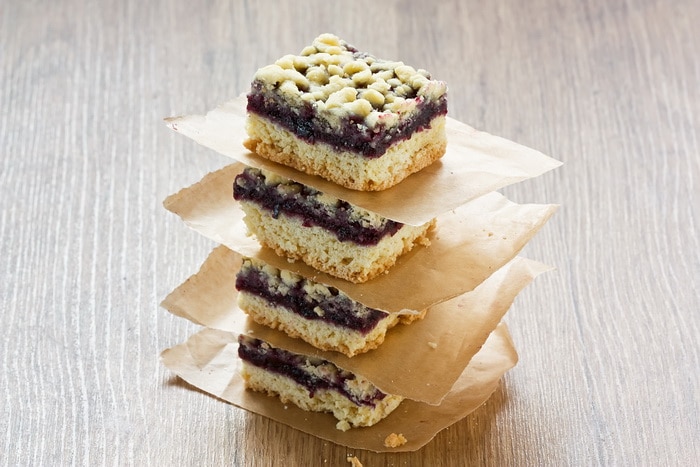
11. Combine the tartness of black currants with the mild sweetness of apples in this apple and black current crumble. If your family enjoys crumbles, this recipe is a great way to use up some of your black currants while they are still fresh.
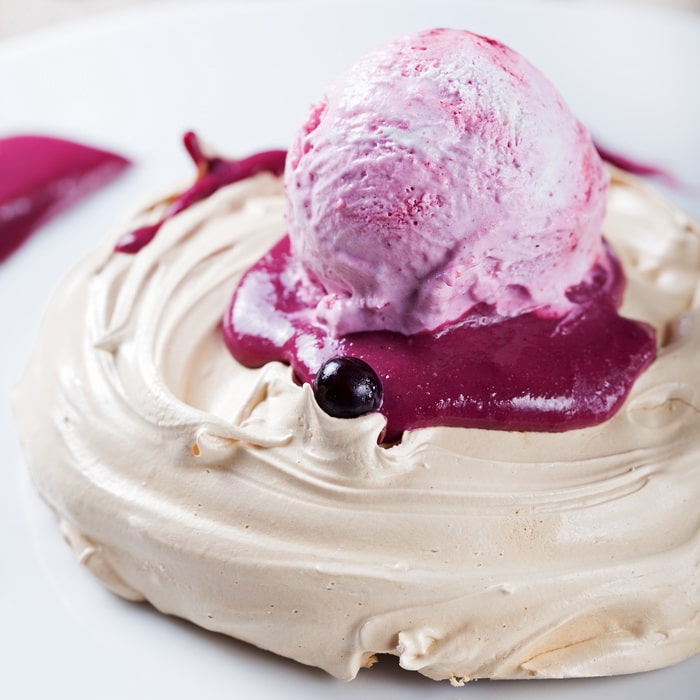
12. A long-standing and surprisingly simple favorite is pavlova. This light dessert looks complex, but is actually fairly simple to make. Tradition calls for plenty of fresh fruits and berries to be included, though sometimes it is fun to make with lemon curd, or black currant curd or even black currant ice cream. This amazing looking pavlova features many summer fruits, and black currants as well. It is an awesome way to enjoy some of the black currant benefits, while also enjoying a spectacular dessert.
13. If you enjoy jello, or making gelatin shots, you can make them with black currant juice, gelatin, and a bit of sweetener. The rich purple tone of black currants makes them a perfect candidate for making jello from the juice. Bonus, it’s a great way to introduce black currant flavors to children if they’ve never tried black currant before, and are unsure about the fruit itself.
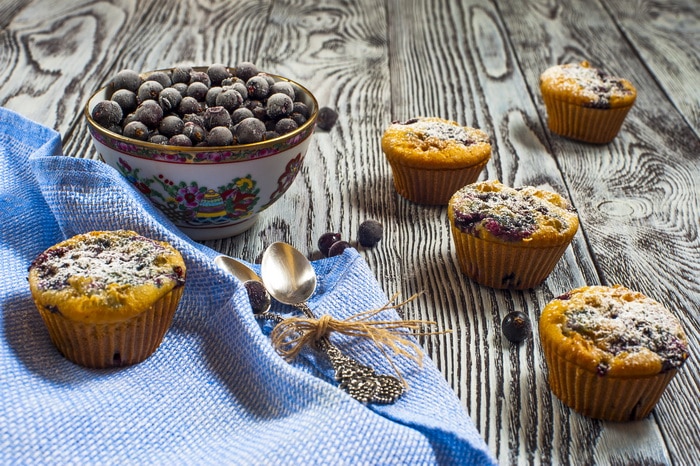
14. Black currants are great used in baking, whether you start with fresh or dried black currents. Muffins are a fun way to use fresh or frozen black currants, and to enjoy them throughout the cooler, darker, winter months. Add some cheese on the side, and some butter, and you have an amazing breakfast that includes the benefits of black currants.
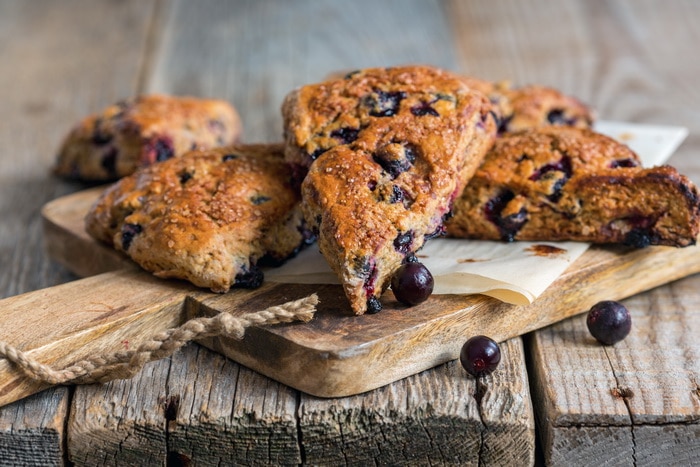
15. If you keep gluten free, you can try this take on black currant scones made with almond flour. These also fit with a paleo diet, and are lower in sugar than many other baked goods. These are made with dried currants, either black or red, so if you dry your own currants you’ll be able to enjoy these scones all year round.
If you’ve never grown black currants, they are one of the rare berries that loves slightly damp soil, and doesn’t need a lot of care and attention. They start well from cuttings, so you can even start black currants from a pruning from a neighbor’s or friend’s plant. Make sure that any plant you take cuttings from is pest and mildew free, and that you have permission. You can learn more about growing and harvesting black currants here.
Black currants are just one of many berries you can use in cooking and baking
Try these other ways to utilize this delicious fruit



Been growing all manner of currants for decades here in Alaska. Liqueurs are nice gifts for the holidays. Scandinavian Solbaerrom with a white rum base is an affordable option. I never use straight grain alcohol as it is too raw a flavor. True Cassis is made with brandy, not vodka. It is difficult to find a decent and affordable brandy in the US, as most American made brandies tend to have notes of vanilla, which spoils the Cassis. And, the better complexity of the wild Ribes hudsonianum, our wild black currants, is superior in flavor for making jellies and liqueurs.